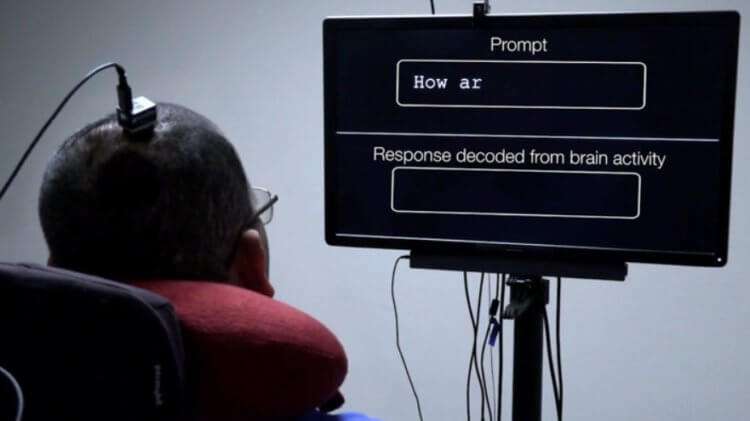Paralysis is commonly referred to as a condition in which a person cannot move. It is caused by damage to the nervous system due to serious injuries, strokes, and a variety of other causes. In some cases, the paralysis makes people unable to speak, and scientists are trying their best to give them back the ability to communicate with the world around them. Ideally, the researchers want to create a system that will be able to convert a person’s thoughts into text on a monitor screen or even into a real voice. Similar technologies already exist, but they work slowly – with thoughts people need to move the cursor of the mouse and press the buttons of the virtual keyboard. Recently, however, American scientists have made a major breakthrough. A 30-year-old man who lost the ability to speak was able to “say” a sentence just by thinking about it. Let’s find out how the technology works, shall we?

Today, it is common to be afraid of implanted chips, but sometimes they are of great benefit
Speech recovery technology
Information about the technology developed by Californian scientists is published on their official website. The first person who was able to communicate with the world around him using the new system was a 30-year-old man. About 15 years ago he was paralyzed after a stroke and has not been able to talk to his relatives. But thanks to the work of scientists, he is already able to “pronounce” 50 words. During the test, he was asked if he wanted a drink of water. With the help of his thoughts, he was able to display the message “No, I’m not thirsty. Previously he had only been able to talk to people by typing with a pointer attached to his baseball cap.
The essence of the technology is that a matrix was implanted into the man’s cerebral cortex to read the activity of the speech center. The human body is organized in such a way that even if it is impossible to move his mouth, the brain activates the areas responsible for speech at the attempt to pronounce the words. According to the author of the scientific work, Edward Chang (Edward Chang), during the communication people usually say an average of 150 to 200 words per minute. Previous technology allowed people to control the cursor and click on the virtual keyboard, but it took too much time.
The technology created works faster than others
Before the test, the man had to participate in the training of artificial intelligence, which matches different types of brain activity with certain words. For clarity, you can imagine that each word has its own “fingerprint” by which the system recognizes them. For example, when a person tries to say the word “hello,” one bundle of neurons is activated, but when a person tries to say “no,” a completely different bundle of neurons is activated. In preparation for the trial, scientists were able to train the system to recognize 50 words. At the moment this is the entire available set of words for a man, but in the future it is going to expand.
Help for paralyzed people
Another author of scientific work David Moses (David Moses) shared that they were surprised by the exact deciphering of some words. But to be fair, in its current form, the technology can only process 18 words per minute, with a recognition accuracy of only 75%. The technology is impressive, but it is still far from perfect and the developers have a lot to strive for.
English theoretical physicist Stephen Hawking communicated with the world using a tablet
It is important to note that the system developed is not like other interfaces for transferring information from the brain to the computer. As I said above, previously paralyzed people could only use such technology to move the cursor on the surface of the virtual keyboard. Now everything is faster – a person only needs to think of a word, and it is displayed on the screen. If scientists manage to turn a text into a voice, in the future one of the problems of paralyzed people will be almost completely solved. The main thing now is to improve the accuracy of word recognition, and there shouldn’t be any difficulties with sounds, because the Google Translator already does an excellent job of voicing texts.




